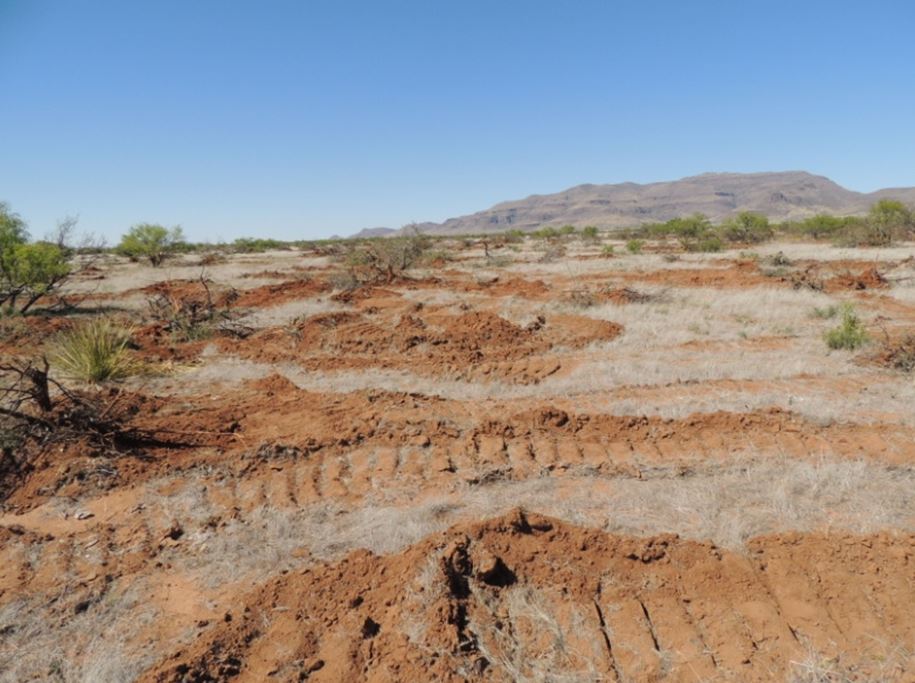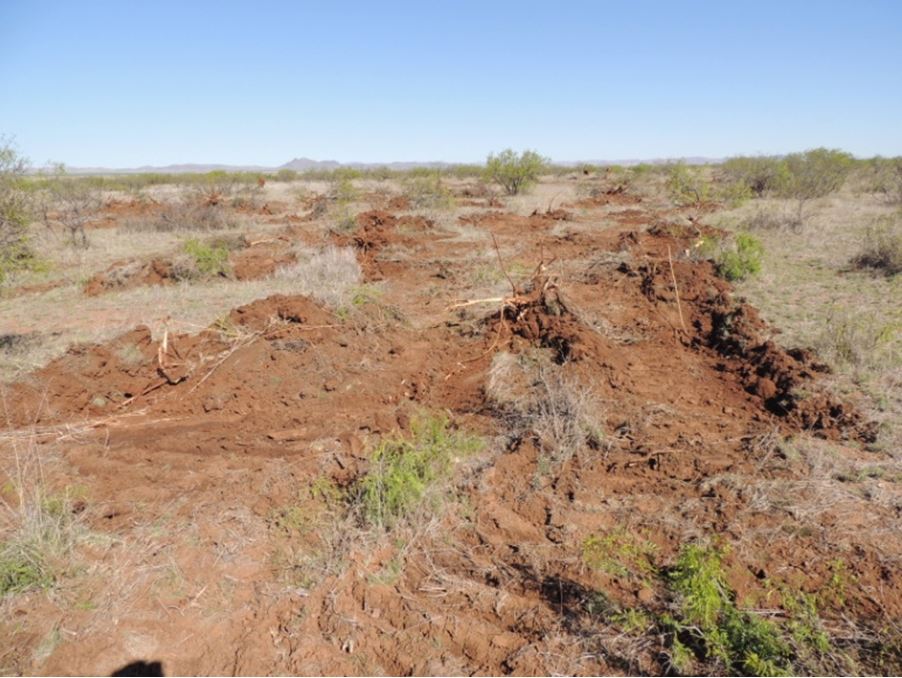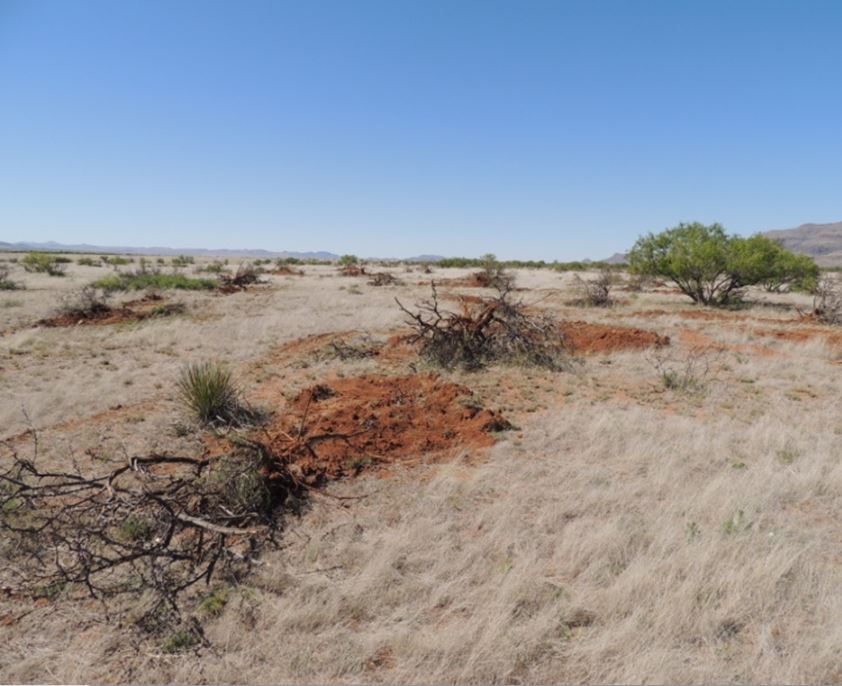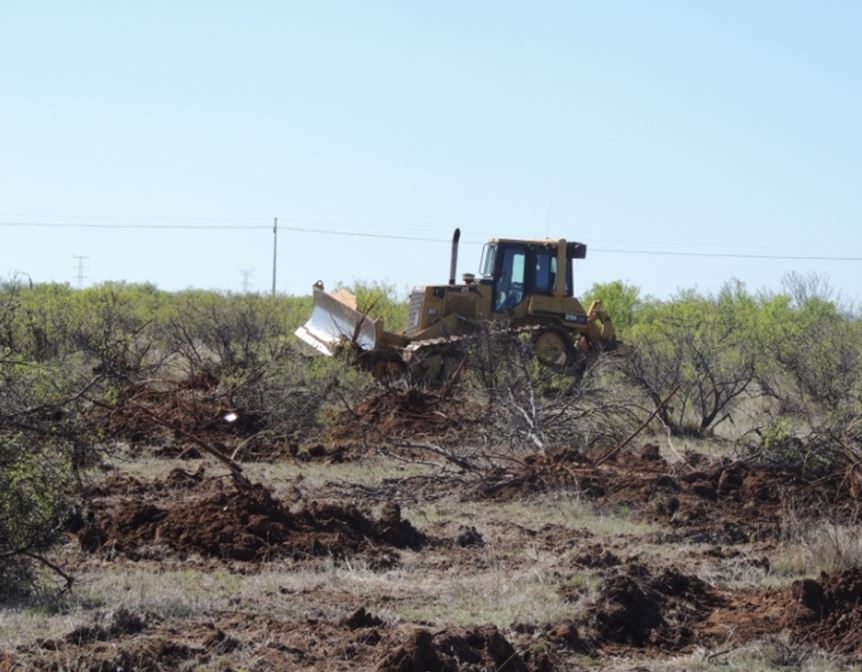| Type | CEC-supported Ranch Pilot |
| Organization | Rancho San Luis |
| Country | Mexico |
| Region | Municipality of Villa Ahumada, Chihuahua |
| Grass Type | Open tussock grassland and halophyte grassland |
| # of head of cattle | 450 |
| Hectares | 7,500 |
| Language | Spanish |
| Date modified | August 2015 |
Rancho San Luis forms part of the grassland conservation collaboration initiative between the Commission for Environmental Cooperation (CEC) and the non-profit organizations, Rocky Mountain Bird Observatory and IMC Vida Silvestre, financed with funds from the CEC, the USFWS-NMBCA Program, and Mexico’s National Commission for Protected Natural Areas(Conanp). Actions have focused on the specific improvement of the habitat and landscape structure in the grasslands.
At Rancho San Luis, located in the central valley region of Chihuahua, one of the last open grasslands in the Chihuahuan Desert, the main activity is cattle raising: 450 head of cattle are raised, divided into two different herds, one of registered Red Angus and another with commercial cattle. In addition to stockbreeding, a 100-hectare field of pecan trees is grown.
The ranch owner, Luis Enrique Terrazas, comes from a family with more than 100 years of stockbreeding tradition. An enthusiastic and very active rancher, his management style is noted for the inclusion of ranch personnel, as he gives special importance to the well-being of the foreman, the cowhands and their families. For Terrazas, grassland conservation is a priority, and in general his cattle are kept in good physical condition. He is also particularly proud of the wildlife on his land.
Most grassland birds of common interest winter in the region where Rancho San Luis is located, which is of great international importance for grassland conservation. These species include the chestnut-collared longspur (Calcarius ornatus), Sprague’s pipit (Anthus spragueii), Baird’s sparrow (Ammodramus bairdii), and the grasshopper sparrow (Ammodramus savannarum). In addition to being the habitat of one of the last herds of Mexican pronghorn (Antilocapra americana mexicana), the ranch is a potential habitat for the aplomado falcon (Falco femoralis) and the golden eagle (Aquila chrysaetos).
There are three main threats to the ecology of the grasslands at Rancho San Luis: 1) the invasion of Lehmann lovegrass; 2) the lack of true native perennial bunchgrasses, and 3) the invasive expansion of mesquite. These three factors affect cattle production, as they lead to poor quality forage and fragmentation of the habitat for native fauna species. The lack of true perennial native grass limits the availability of winter nutrition for many grassland birds, and the expansion of mesquite fragments the cover for pronghorn transit and escape.
Ranch management involves the rotational grazing of two groups of cattle in 11 paddocks, with a moderate load of 16 hectares per animal unit (ha/AU). This management has resulted in a grassland cover of more than 65 percent of the area, in addition to always having available forage to maintain cattle with minimum use of supplements.
As regards direct management actions, escape ramps have been placed in water basins to prevent birds from drowning; two artificial nests were installed for the aplomado falcon; fences were adapted to facilitate the passage of pronghorn, and mechanical control of mesquite on 168 hectares has been conducted to reduce this shrub cover by 80 percent.
The management of mesquite is intended to create a connection between open grassland areas in order to expand the grassland bird habitat, such as the golden eagle, the aplomado falcon and the Swainson’s hawk, and to create pronghorn corridors. The clearing of mesquite also helps retain rainwater and aids the sprouting of beneficial grass and scrub.



